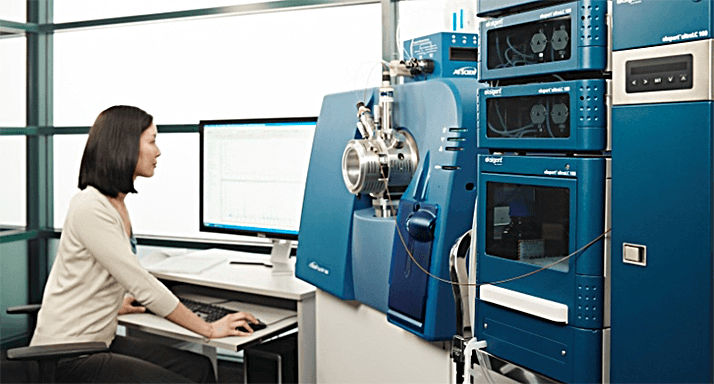Overview
Here we present results using a novel data processing approach to quickly and automatically identify unknown and unexpected compounds, such as residues and contaminants, in complex food samples. The data analysis workflow combines non-target peak finding, sample-control-comparison, empirical formula finding, MS/MS library searching, and ChemSpider search combined with MS/MS interpretation – and most of these steps are automated, making data processing fast and easy for the user. Food samples were prepared using a simple solvent extraction or QuEChERS extraction and analyzed with reversed phase LC. High resolution and accurate mass MS and MS/MS information was collected in a single injection on AB SCIEX TripleTOF® 4600 and 5600 systems. Data were processed using the new MasterView™ software.


Introduction
LC-MS/MS is a powerful analytical tool for the analysis of food residues and contaminants. In particular, triple quadrupole based mass analyzers are popular for targeted quantitation of hundreds of food contaminants in a single analysis because of their extra degree of selectivity and sensitivity when operated in Multiple Reaction Monitoring (MRM) mode. Advancements in LC-MS/MS technology, including hybrid systems like triple quadruple linear ion trap (QTRAP®) and quadrupole-quadrupole Time-of-Flight (TripleTOF®), now provide the ability to perform both targeted and non-targeted screening in food samples on a routine basis. However, full scan chromatograms are very rich in information and contain easily thousands of ions from both chemical compounds present in the sample as well as from the sample matrix itself. Thus, powerful software tools are needed to explore the high resolution and accurate mass data generated to get answers and results from these complex data. MasterView™ software utilizes a powerful non-target peak finding algorithm to find chromatographic features. Samplecontrol- comparison was performed to separate matrix and sample-specific signals from true contaminations. Ions of interest were processed using automatic MS/MS library searching, empirical formula finding, and ChemSpider searching to tentatively identify the molecular formula and structure of the unknown compound. The accurate mass MS/MS information was utilized to reduce the number of potential formulae during the formula finding step and to compare the experimental MS/MS pattern with a theoretical fragmentation pattern of structures proposed by ChemSpider. The new MasterView™ software offers an intuitive workflow to tentatively identify unexpected compounds in complex samples. The software allows quick processing, easy results review, and reporting.





